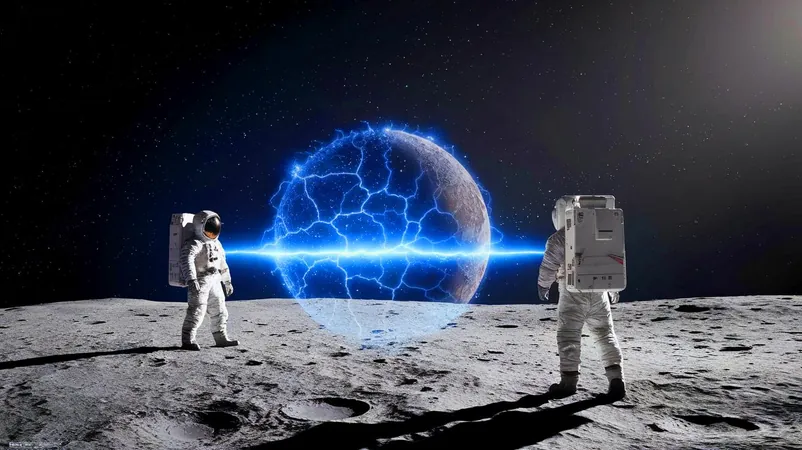
NASA's Game-Changer: Electric Force Field to Defend Against Hazardous Lunar Dust!
2025-04-04
Author: Nur
The Danger of Lunar Dust
Lunar dust is not just an annoyance; it poses serious threats to both astronauts and spacecraft. Formed over billions of years from relentless micrometeorite impacts, this fine, sharp dust is highly abrasive. It can not only damage sensitive equipment but also infiltrate spacesuits, leading to potential health risks for astronauts. During the Apollo missions, astronauts returned from moonwalks covered in this abrasive dust, which often made its way into the Lunar Module, creating a hazardous environment.
Moreover, lunar dust carries an electrostatic charge, causing it to adhere stubbornly to various surfaces. This adherence complicates operational efficiency, making it crucial for future exploration endeavors—particularly those focused on sustaining long-term human habitation on the Moon. The EDS could be a transformative solution, clearing dust and protecting vital equipment without the mechanical parts that could fail over time.
How the Electrodynamic Dust Shield Works
The EDS employs cutting-edge technology by utilizing tiny electrodes to generate high-voltage AC signals. This process creates dielectrophoretic forces that generate a traveling wave, effectively pushing dust particles away from surfaces. The simplicity of the design is striking—since the EDS has no moving parts, it boasts a significantly reduced risk of malfunction.
The EDS's capability to keep critical surfaces like solar panels and optics clean will bolster mission safety and efficiency. Moreover, by fine-tuning the electric field's phase pattern, the system can direct dust movement, ensuring targeted and effective cleaning.
Testing Insights from the Blue Ghost Mission
The results from the Blue Ghost Mission were promising. NASA's imagery showcased a substantial visual difference before and after activating the EDS, revealing its impressive capability to manage lunar dust effectively. While this test wasn’t comprehensive, it sets the stage for future research and development aimed at refining this technology for upcoming lunar missions.
The insights gleaned from this mission are vital for upcoming explorations, as they will inform the design and integration of the EDS into future spacecraft, which could reshape our approach to overcoming the challenges posed by the Moon's hostile environment.
Paving the Way for Future Lunar Exploration
As humanity prepares for a new era of lunar exploration, addressing environmental obstacles like lunar dust is more crucial than ever. The successful testing of the EDS signifies a major leap forward, enabling the potential for sustainable human presence on the Moon.
This innovative technology exemplifies the relentless spirit of scientific advancement and problem-solving in space exploration. As we continue to push the boundaries of what is possible, the lessons learned through developments like the EDS could lead to even more revolutionary technologies in our mission to explore the Moon and beyond. What other extraordinary innovations await us in our quest for knowledge about the lunar landscape?
Stay tuned as we unlock the secrets of the universe, one technology at a time!



 Brasil (PT)
Brasil (PT)
 Canada (EN)
Canada (EN)
 Chile (ES)
Chile (ES)
 Česko (CS)
Česko (CS)
 대한민국 (KO)
대한민국 (KO)
 España (ES)
España (ES)
 France (FR)
France (FR)
 Hong Kong (EN)
Hong Kong (EN)
 Italia (IT)
Italia (IT)
 日本 (JA)
日本 (JA)
 Magyarország (HU)
Magyarország (HU)
 Norge (NO)
Norge (NO)
 Polska (PL)
Polska (PL)
 Schweiz (DE)
Schweiz (DE)
 Singapore (EN)
Singapore (EN)
 Sverige (SV)
Sverige (SV)
 Suomi (FI)
Suomi (FI)
 Türkiye (TR)
Türkiye (TR)
 الإمارات العربية المتحدة (AR)
الإمارات العربية المتحدة (AR)